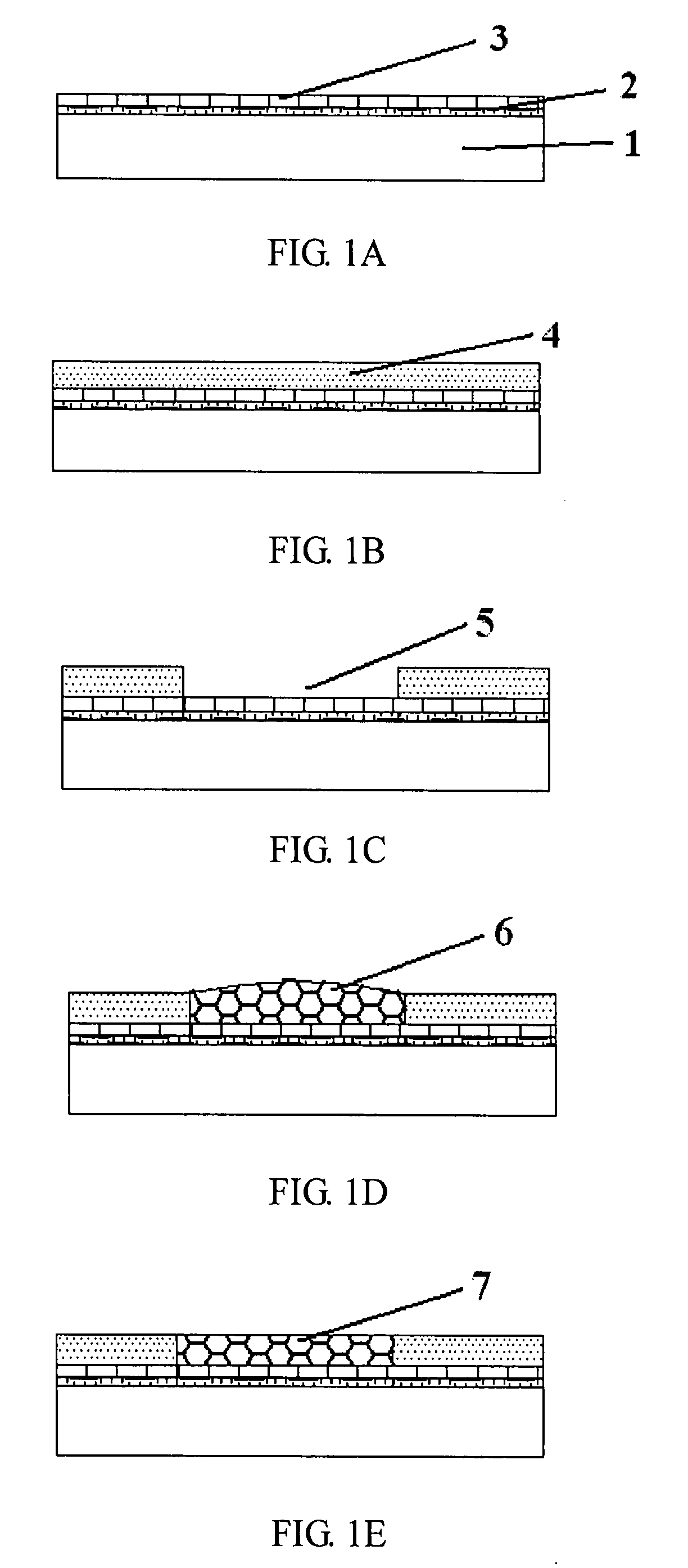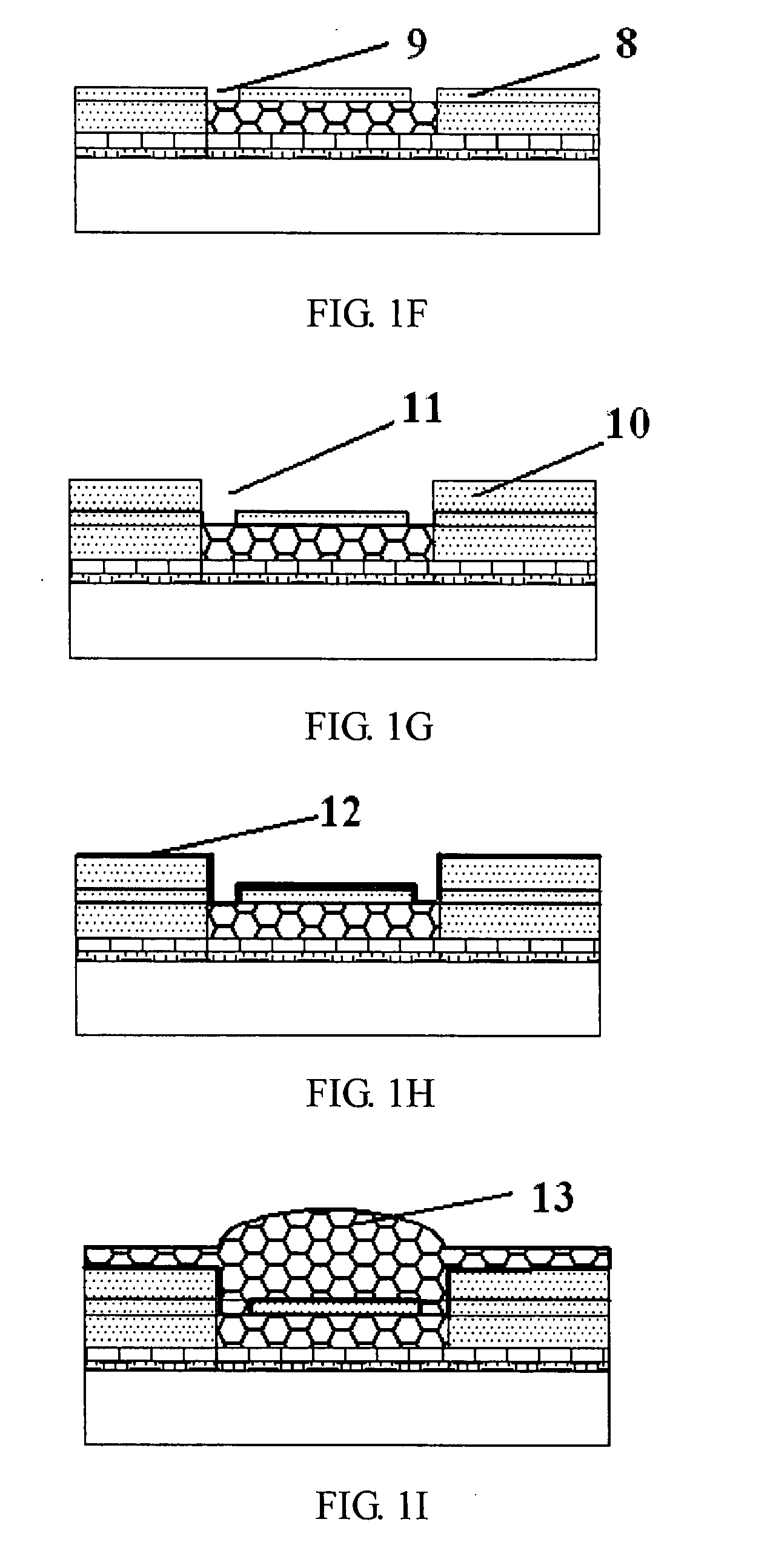Fabrication method for drug-eluting stent with medicine-compatible loading mechanisms
a technology of loading mechanism and stent, which is applied in the field of mems-based (microelectricalmechanical system), can solve the problems of unsatisfactory stent fabrication method, inability to reduce the cost of manufacturing while enhancing the design capability of stent, and inability to meet the requirements of stent size and thickness, and achieves fine pitch and high versatility
- Summary
- Abstract
- Description
- Claims
- Application Information
AI Technical Summary
Benefits of technology
Problems solved by technology
Method used
Image
Examples
Embodiment Construction
[0025]Referring to the attached drawings, a preferred embodiment of the fabrication method for drug-eluting stent with medicine-compatible loading mechanism will be fully understood in detail as follows:
[0026]Referring to FIGS. 1A-1M, these drawings particularly present the schematic sectional diagrams step by step for the drug-eluting stent process.
[0027]Referring to FIG. 1A, firstly, two metallic layers, Cr 2 and Cu 3, are evenly coated over the substrate 1 as two UBMs by sputtering, evaporation or other deposition techniques. Other metals such as Ti (Titanium), W (Tungsten), Ni (Nickel) and Au are also available to be used as these two UBM layers.
[0028]Referring to FIG. 1B, next, the first PR layer 4 is then coated on the second Cu 3 UBM layer. The first PR layer 4 coating in the photolithography process contains three fundamental operation steps described as follows: (1) prop adequate amount of PR layer 4 on the center of the substrate 1 until the whole substrate 1 is covered at...
PUM
| Property | Measurement | Unit |
|---|---|---|
| temperature | aaaaa | aaaaa |
| flow rate | aaaaa | aaaaa |
| flow rate | aaaaa | aaaaa |
Abstract
Description
Claims
Application Information
 Login to View More
Login to View More - R&D
- Intellectual Property
- Life Sciences
- Materials
- Tech Scout
- Unparalleled Data Quality
- Higher Quality Content
- 60% Fewer Hallucinations
Browse by: Latest US Patents, China's latest patents, Technical Efficacy Thesaurus, Application Domain, Technology Topic, Popular Technical Reports.
© 2025 PatSnap. All rights reserved.Legal|Privacy policy|Modern Slavery Act Transparency Statement|Sitemap|About US| Contact US: help@patsnap.com



